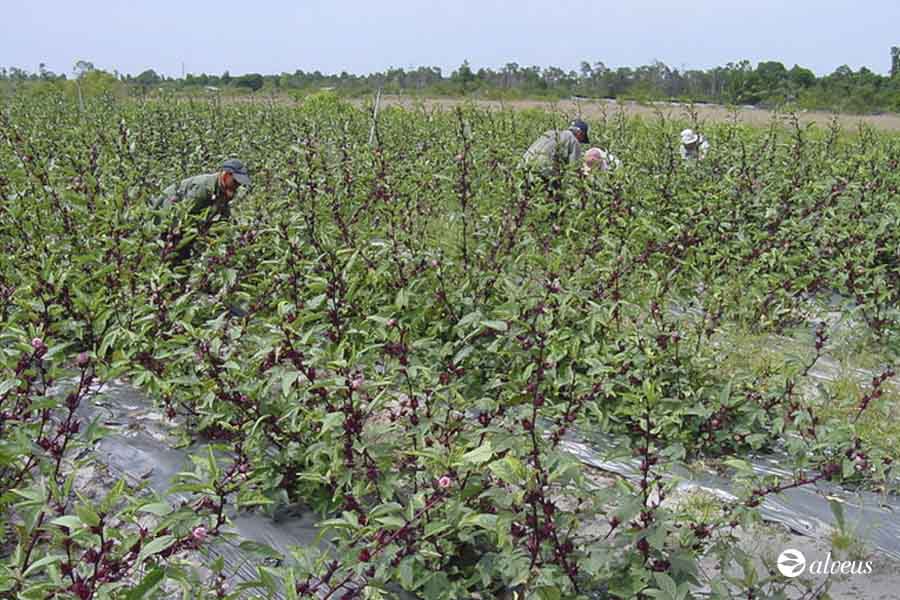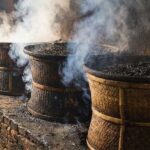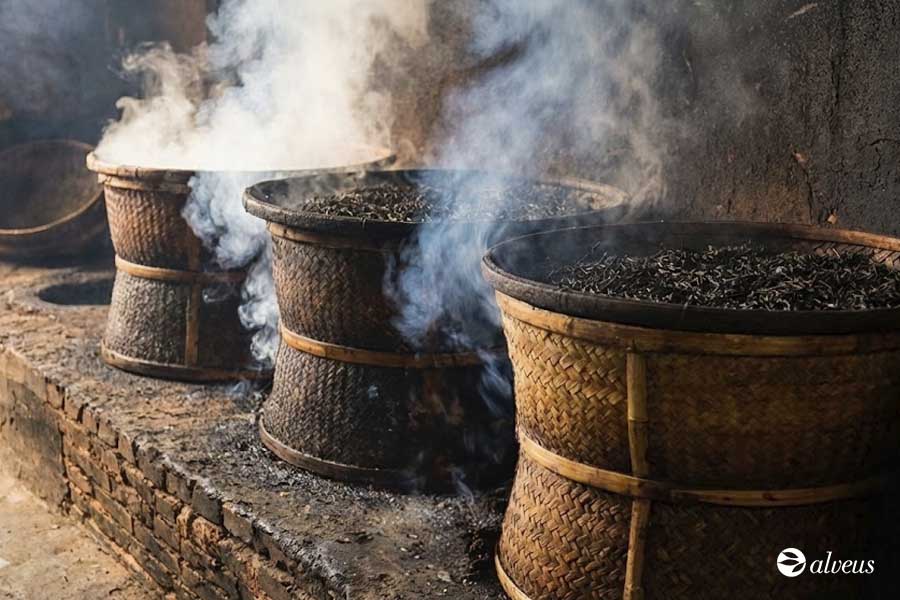The hibiscus, a botanical genus encompassing over 200 species distributed across tropical and subtropical regions, has established itself as one of the most valued ingredients in the world of infusions.
However, not all hibiscus species are used for culinary or therapeutic purposes. One notable species is Hibiscus sabdariffa, commonly known as “roselle” or “hibiscus flower,” traditionally employed in infusion preparations. It stands out for its historical and cultural significance and is also considered a medicinal plant.
In this article, we delve into its botanical origin, differences from other Hibiscus species, and its importance in the world of infusions, exploring both traditional applications and potential benefits in the herbal realm.
What Is the Roselle Flower?
The roselle flower is the common name for the species Hibiscus sabdariffa, a plant of African origin that has been widely adopted by various cultures, especially in Latin America, the Caribbean, and some regions of Asia.
Unlike other Hibiscus species used for ornamental purposes, such as Hibiscus rosa-sinensis, the roselle is distinguished by its fleshy, deep red calyces, which are harvested, dried, and used in infusions.
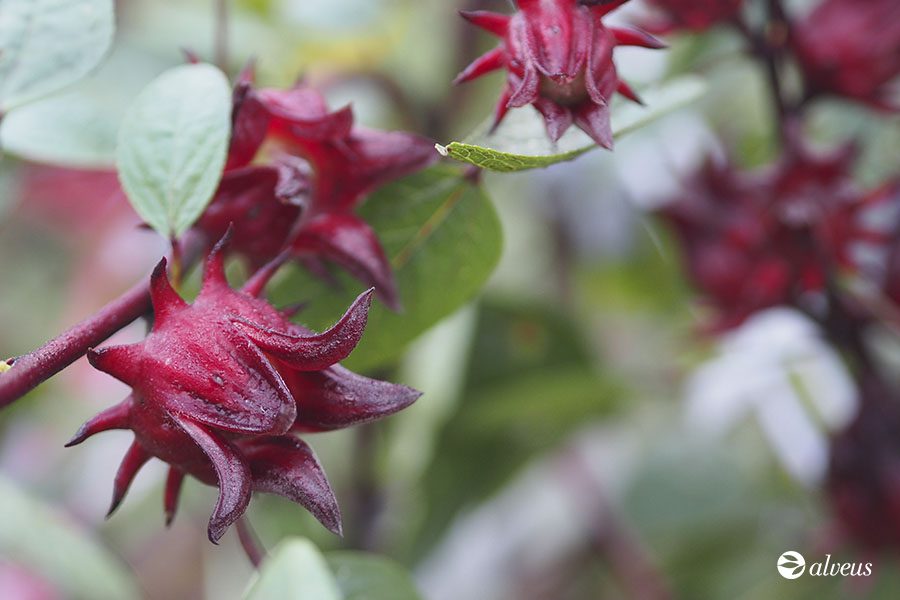
Its characteristic flavour, marked by acidity and fruity notes, makes it an extremely versatile ingredient, used in both cold and hot beverages.
Thanks to its high content of phenolic compounds and organic acids, the roselle has gained popularity as a medicinal plant in functional infusions and natural products with a botanical focus. Moreover, it is part of numerous culinary and medicinal traditions across different cultures.
Botanical Characteristics of Hibiscus sabdariffa
From a botanical perspective, Hibiscus sabdariffa is an annual herbaceous plant belonging to the Malvaceae family, the same family as cotton and okra.
It can reach heights between 1.5 and 2 meters, features reddish stems, alternate leaves with toothed lobes, and large flowers ranging in colour from pale yellow to pink. Reproduction occurs through seeds, and flowering takes place between 4 and 6 months after sowing.
This species adapts well to warm climates and well-drained soils, showing good tolerance to moderate drought conditions. Therefore, it is considered a low-water-requirement and highly sustainable crop, especially valuable for rural communities.
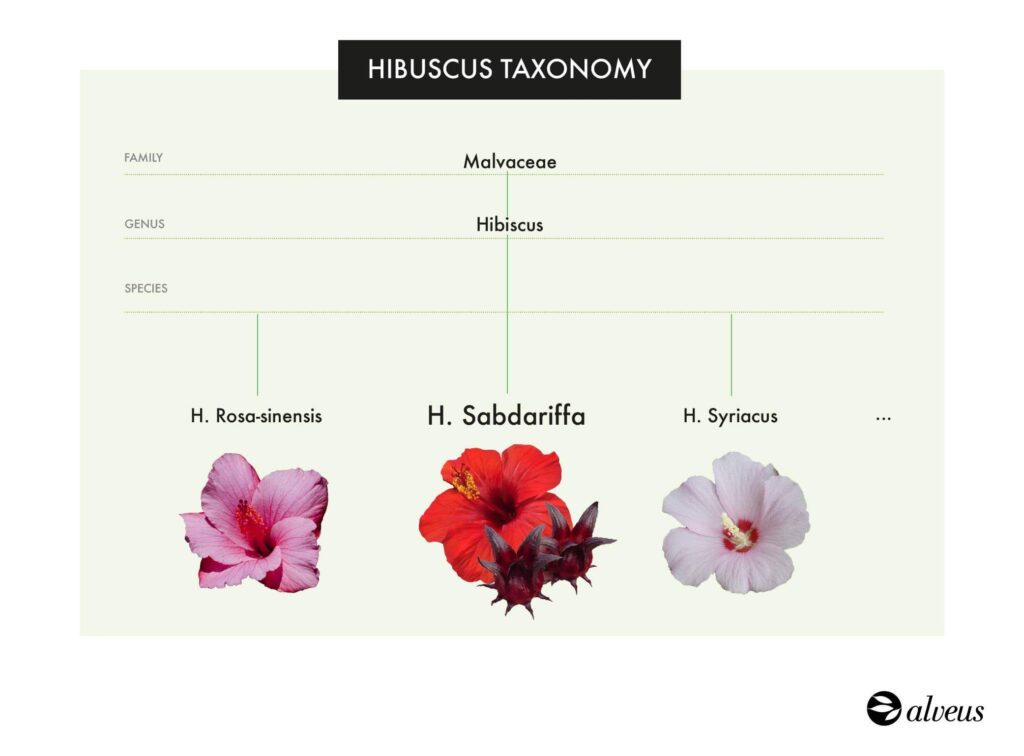
Origins and Spread of the Hibiscus Flower
The hibiscus flower originates from the African continent, specifically in tropical countries such as Sudan, Senegal, and Nigeria, where it has been traditionally used in both folk medicine and cuisine.
From Africa, the plant spread through trans-Saharan trade routes and later through colonial exchanges. During the 17th and 18th centuries, roselle was introduced to the American continent via the slave trade, becoming established particularly in the Caribbean, Central America, and Mexico, where it was quickly adopted into local cuisine.
Its cultivation also expanded to tropical Asia, finding favourable conditions in countries such as India, Thailand, the Philippines, and China, where it still forms part of Ayurvedic medicine and traditional phytotherapy.
Today, hibiscus is cultivated in warm regions worldwide, and its nutritional, medicinal, and cultural value has led to a wide variety of names (roselle, karkadé, bissap, agua de Jamaica) and applications. Its history reflects not only its adaptability but also its importance as a global functional plant.
Active Compounds of This Medicinal Plant
The roselle contains a rich variety of bioactive compounds of interest for their potential beneficial effects. These components are especially concentrated in the calyces of the hibiscus flower (the part that is dried and used in infusions) and can be grouped into several main categories:
1. Anthocyanins
These are the pigments responsible for the characteristic deep red colour of hibiscus tea or roselle water. In addition to contributing to visual appeal, anthocyanins are known for their antioxidant activity, which may be beneficial for cellular protection.
2. Organic Acids
The roselle contains acids such as citric acid, malic acid, hibiscus acid, and tartaric acid, which give it its characteristic tart flavour. These compounds are also associated with effects related to digestion and pH regulation in the intestinal tract.
3. Polyphenols
Hibiscus contains polyphenols from the flavonoid group, such as quercetin, kaempferol, and their derivatives, compounds known for their antioxidant and anti-inflammatory properties.
4. Phytosterols
This type of hibiscus contains small amounts of phytosterols, compounds structurally similar to cholesterol that, as part of a balanced diet, have been linked to the control of intestinal absorption.
5. Mucilages and Pectins
Among the soluble compounds present in hibiscus, mucilages and pectins play an important role in the diet, contributing to the intake of soluble fibre, which is often associated with intestinal balance and a feeling of satiety.
6. Vitamins and Minerals
Although in smaller amounts, the roselle contains essential vitamins and minerals such as vitamin C, calcium, magnesium, iron, and potassium, which are fundamental for various physiological functions of the body.
Refer to our blog post on the active compounds found in medicinal plants like hibiscus for more information.
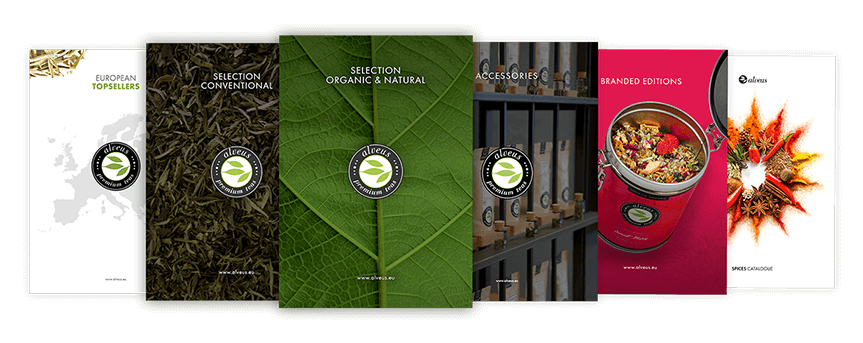
Traditional and Current Uses of the Roselle
Throughout history, the roselle has transcended its botanical origin to become a culturally significant and functional ingredient.
From West Africa to Latin America and Asia, the calyces of Hibiscus sabdariffa have been used in social rituals, daily preparations, and traditional formulas associated with well-being.
Today, its presence extends to various sectors, from gastronomy to cosmetics, reflecting its versatility and adaptability to contemporary trends in food and personal care.
Roselle Tea, Hibiscus Tea, or Agua de Jamaica
The most popular use of the hibiscus flower is in the preparation of infusions, which can be found under different names depending on the cultural context: roselle tea, agua de Jamaica, or hibiscus tea, as it is commonly known in Spain.
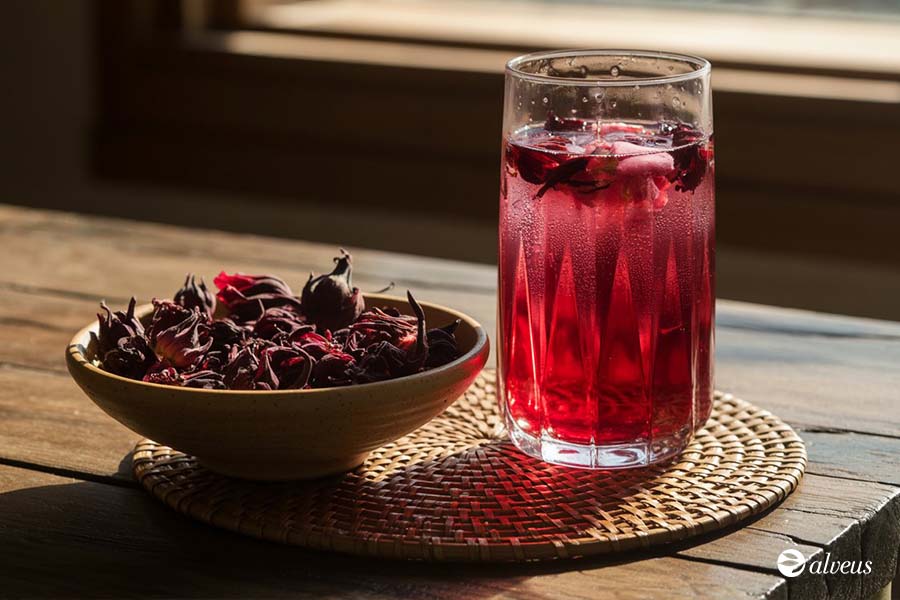
Make sure the reddish colour of the infusion is visible, along with the dried calyces (the part used for brewing).
Dried calyces are used in all cases, imparting a deep red colour and a tangy, fruity flavour to the infusion — a signature of the plant.
This herbal tea can be served hot or cold and is often enjoyed on its own or blended with other ingredients such as dried fruits, spices (like cinnamon or ginger), rooibos, or even green tea.
It is especially popular as a natural cooling drink in hot climates, thanks to its thirst-quenching and revitalising properties. It has also gained popularity as a natural alternative to sugary or energy drinks. Its characteristic acidity and rich pigmentation make it an ideal base for cocktails and kombucha, adding a fruity note and a striking colour.
Culinary and gastronomic uses
Beyond its use as an herbal tea, hibiscus flower has many traditional culinary applications across regions such as Mexico, Africa, the Caribbean, and Southeast Asia.
The rehydrated calyces are used in jams, syrups, chutneys, and sweet-and-sour sauces. They are also incorporated as a plant-based filling in tacos, empanadas, or burritos, or used as a tangy, decorative ingredient in salads and desserts.
In African countries such as Nigeria and Senegal, the calyces are turned into preserves, soups, or pickles, while in the Caribbean and Australia, they are used in gourmet fillings and jellies, even combined with cheese.
Their tangy flavour and vibrant colour make them ideal for modern plant-based and natural cuisine. In the food industry, hibiscus is also used as a natural colourant in beverages, jellies, and sweets.
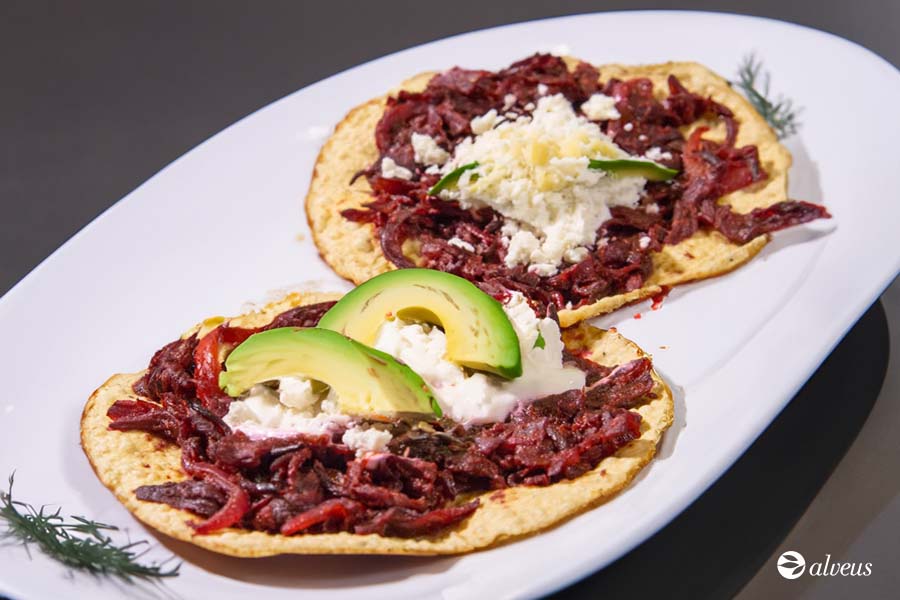
Cosmetic and pharmaceutical applications
Hibiscus is highly valued in the cosmetics and pharmaceutical industries for its natural properties, which are believed to benefit both skin and hair care.
Its extract is incorporated into creams, toners, and serums, as it is thought to help improve skin appearance and reduce visible signs of ageing. It is also used in hair treatments, where it may support scalp health and help strengthen hair.
In the pharmaceutical field, hibiscus is found in some formulations intended to support digestion and help regulate blood pressure, due to compounds with potential diuretic and antioxidant effects, though further research is needed to confirm these benefits conclusively.
A natural resource with history and future
Flor de Jamaica, also known as hibiscus or roselle, stands out not only for its tangy taste and vibrant colour but also for its versatility as a functional and medicinal plant.
Appreciated in herbal teas, traditional dishes, and cosmetic products, its use has expanded across cultures due to its botanical profile and richness in natural compounds like anthocyanins, organic acids, and polyphenols.
Today, it remains a key ingredient in modern culinary and wellness practices, featured in refreshing beverages, personal care formulas, and creative gastronomy.
Its combination of history, adaptability, and nutritional value positions it as a plant with true potential — bridging tradition and innovation in a single natural resource.


